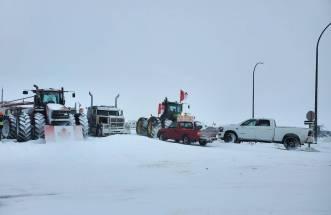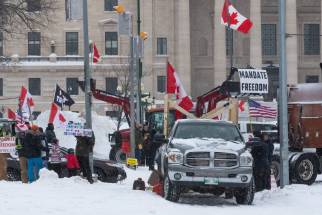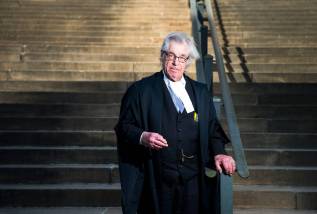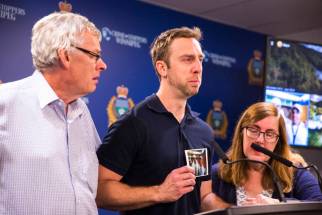Keeping the peace, and that’s a win Police restraint in dealing with downtown protesters serves greater good
Read this article for free:
or
Already have an account? Log in here »
To continue reading, please subscribe:
Monthly Digital Subscription
$0 for the first 4 weeks*
- Enjoy unlimited reading on winnipegfreepress.com
- Read the E-Edition, our digital replica newspaper
- Access News Break, our award-winning app
- Play interactive puzzles
*No charge for 4 weeks then price increases to the regular rate of $19.00 plus GST every four weeks. Offer available to new and qualified returning subscribers only. Cancel any time.
Monthly Digital Subscription
$4.75/week*
- Enjoy unlimited reading on winnipegfreepress.com
- Read the E-Edition, our digital replica newspaper
- Access News Break, our award-winning app
- Play interactive puzzles
*Billed as $19 plus GST every four weeks. Cancel any time.
To continue reading, please subscribe:
Add Free Press access to your Brandon Sun subscription for only an additional
$1 for the first 4 weeks*
*Your next subscription payment will increase by $1.00 and you will be charged $16.99 plus GST for four weeks. After four weeks, your payment will increase to $23.99 plus GST every four weeks.
Read unlimited articles for free today:
or
Already have an account? Log in here »
Hey there, time traveller!
This article was published 10/02/2022 (1398 days ago), so information in it may no longer be current.
Police are damned if they do and damned if they don’t when it comes to large-scale protests. If they use physical force to break up demonstrations, they’re usually accused of being too heavy-handed. When they take a moderate approach and try to negotiate a peaceful resolution, they’re blamed for failing to uphold the law.
It’s a no-win situation that sums up what’s been going on in front of the Legislative Building over the past week.
Public expectation of how police should respond to demonstrations is a moving target; it’s often influenced by what people are protesting. If a demonstration has public support (an anti-poverty rally, for example), there’s usually less tolerance for authoritative police intervention. If it’s a less-popular demonstration (such as an anti-vaccine mandate protest), the public is more likely to demand that cops “do their jobs” and “enforce the law.”
City mulls court action on anti-mandate protest
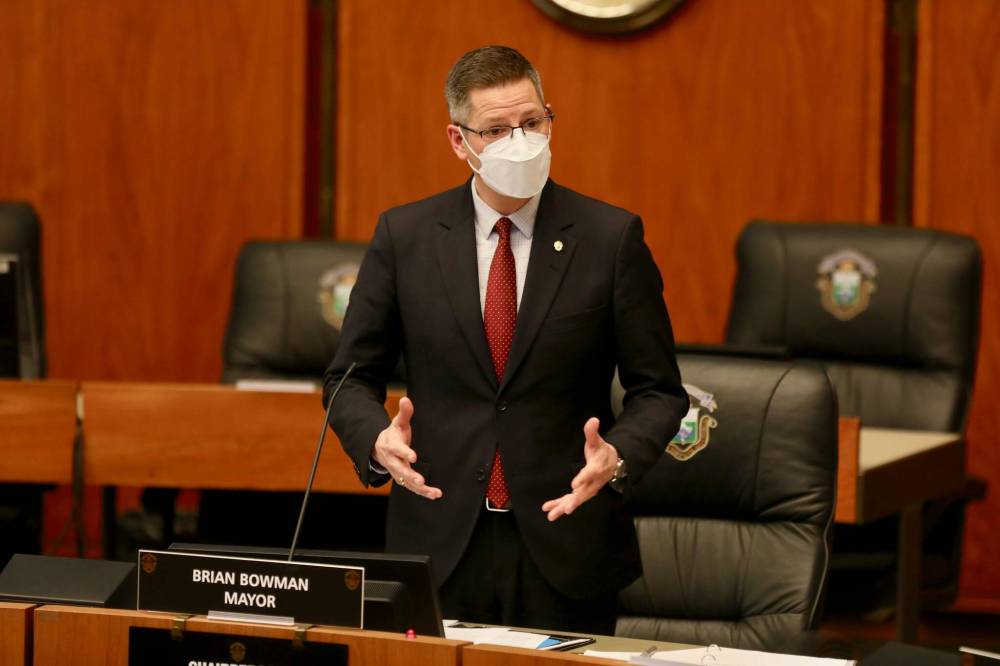
Posted:
The City of Winnipeg will explore a potential court injunction against the anti-mandate protest that has delayed traffic and created excessive noise in downtown Winnipeg.
It’s pretty safe to assume the 100-150 people who have been protesting COVID-19 vaccine mandates (and other public-health measures) in downtown Winnipeg don’t have a groundswell of public support. Not surprisingly, the public is less likely to support their “right” to disrupt the community, including blasting train horns and violating traffic laws. Worse, it’s been going on for a week with no end in sight.
That makes it a lot easier for city councillors and Mayor Brian Bowman, who held a special council meeting Thursday, to demand the immediate removal of the “illegal occupation.”
For police, though, it’s not that simple – especially with a protest as volatile as this one. Cops could physically remove the protesters. They have the resources to do it. That’s not the issue. The issue is whether confronting protesters and making mass arrests is the best way to proceed. Make no mistake, it would be ugly: batons, bloodied faces, broken bones, severe injuries — maybe worse. And they could return.
At least one city councillor recognizes that. John Orlikow (River Heights-Fort Garry) said Thursday as much as he wants protesters to leave the area, enforcing the letter of the law could turn into something no one wants.
“By inciting more anger and divisiveness, the concern I would have is this protest may actually become violent and even worse,” he said.
Which is why police usually opt for de-escalation over mass arrest.
They have done a relatively good job of containing this protest. It may not appear that way to the public, but they have. It began by talking with protest leaders before the occupation began (which cops typically do prior to known demonstrations). Goodwill was established early on and agreements were reached on things such as keeping Broadway (and York Avenue, most of the time) open to traffic and moving portable toilets off the road. Garbage is cleaned up and removed and there has been no property damage. Police do inventory checks of all vehicles in the zone.
More recently, protest leaders have agreed to limit horn blasts to a few minutes once an hour (and not overnight). For police, keeping that line of communication open is crucial to maintaining some semblance of order, as imperfect as that may be. The alternative could be worse.
I spent about 10 hours in the occupation zone at different parts of the day and night Wednesday and Thursday. I saw no evidence of abusive behaviour, property damage or violence. The incessant honking by some passing motorists and supporters (as well as the hourly horn blasts) are distressing to local residents. Beyond that, the protest has been managed about as well as could be expected.
That doesn’t mean police shouldn’t do more — they should, including ensuring the footprint of the occupation doesn’t grow. York Avenue, for example, has been blocked by protesters from time to time. Police should draw a line in the sand and ensure no streets other than Memorial Boulevard (where the bulk of the protesters are stationed) are blocked. Officers should also stop and ticket vehicles that circle the area blasting their horns.
This protest could turn ugly no matter what police do, especially if a planned counter-protest on the grounds of the Legislative Building Saturday proceeds. There’s no easy answer to any of this. However, seeking non-violent solutions seems to be the lesser of two evils.
tom.brodbeck@freepress.mb.ca

Tom has been covering Manitoba politics since the early 1990s and joined the Winnipeg Free Press news team in 2019.
Our newsroom depends on a growing audience of readers to power our journalism. If you are not a paid reader, please consider becoming a subscriber.
Our newsroom depends on its audience of readers to power our journalism. Thank you for your support.

